In culinary art, the importance of using the right utensils for cooking cannot be stressed enough. The quality and durability of cookware largely contribute to the overall effectiveness of the cooking process. One innovative technique that has sparked interest among chefs and cooking enthusiasts is hard nitriding cast iron. This process involves a specialized heat-treatment procedure that extends the life of the cast iron cookware and improves its performance, making it an ideal companion in the kitchen.
Hard nitriding cast iron cookware undergoes a unique process where the cast iron’s surface undergoes nitrogen diffusion, resulting in a hardened and wear-resistant layer. This enhanced surface provides excellent heat distribution, non-stick properties, and corrosion resistance, making the cookware ideal for a wide range of cooking methods. As more people become increasingly invested in creating the perfect culinary experience, understanding the benefits of hard-nitriding cast iron in cooking will play a crucial role in revolutionizing the way we prepare our meals. Explore with us as we delve into what makes this innovative technique stand out in the ever-evolving world of cookware technology.
What Is Hard Nitriding, And How Does It Affect Cast Iron Skillets?
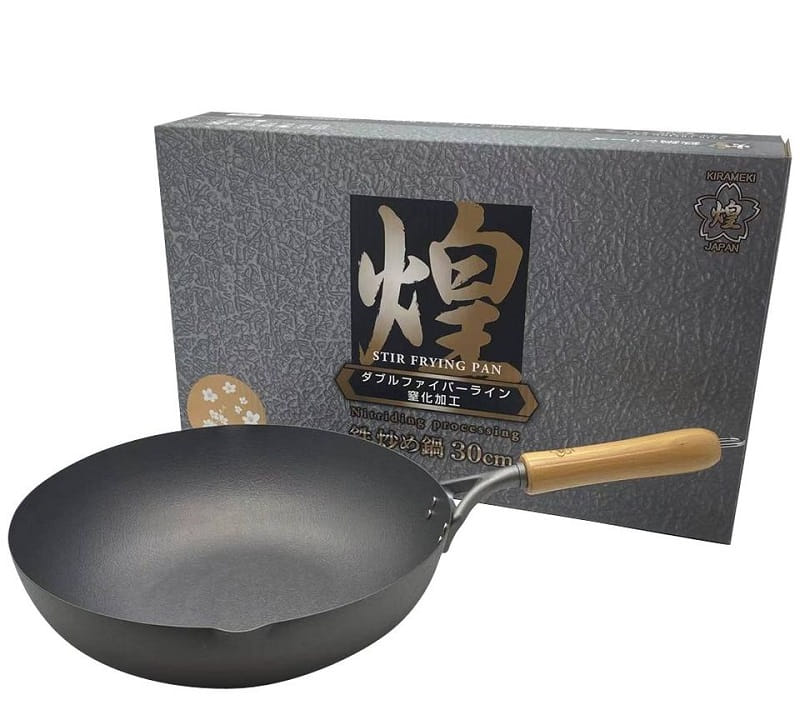
Hard nitriding is a surface treatment process that involves exposing a metal object, such as a cast iron skillet, to nitrogen gas at high temperatures for an extended period of time. This causes the nitrogen to diffuse into the surface of the metal, creating a hard, wear-resistant layer.
So, how does this affect cast iron skillets specifically? For starters, it can significantly improve their durability and resistance to wear and tear. This means that your cast iron skillet will be more resistant to scratches, dings, and other forms of damage that can otherwise compromise its performance.
In addition, hard nitriding can also improve the non-stick properties of a cast iron skillet. This is because the hard nitrided layer helps to fill in the microscopic pores and imperfections on the skillet’s surface, creating a smoother, more even surface that food is less likely to stick to.
Another benefit of hard nitriding is that it can enhance the heat retention properties of a cast iron skillet. Cast iron is already known for its ability to retain heat. Still, a hard nitrided layer can further improve this property, allowing your skillet to stay hotter for longer.
Of course, it’s important to note that hard nitriding cannot be done at home. It requires specialized equipment and expertise and is typically performed by professional metalworking companies. However, if you’re in the market for a new cast iron skillet, you may consider purchasing one that has undergone hard nitriding.
Read more:
What Are The Primary Benefits Of Hard Nitriding Cast Iron Skillets?
Over the years, I’ve discovered that cast iron skillets are a staple in any kitchen, and for a good reason. They’re durable, versatile, and can last for generations if cared for properly. However, not all cast iron skillets are created equal. Hard nitriding cast iron skillets are a cut above the rest, and here’s why.
Firstly, hard nitriding is a process that enhances the surface of the cast iron skillet, making it more resistant to wear and tear. This means your skillet will retain its non-stick properties for longer, making it easier to cook and clean. With a hard, nitriding cast iron skillet, you can cook your favorite meals without worrying about them sticking to the pan or leaving a mess.
Secondly, hard nitriding makes the cast iron skillet more corrosion and rust-resistant. This is particularly important if you live in a humid area or store your cast iron skillet in a damp environment. With a hard, nitriding cast iron skillet, you won’t have to worry about rust or corrosion damaging your pan, and you can use it for years to come.
Thirdly, hard nitriding also improves the heat distribution of the cast iron skillet. This means your food will cook evenly, ensuring you get the best possible results every time. Whether searing a steak or sautéing vegetables, a hard nitriding cast iron skillet will help you achieve the perfect cook.
Lastly, hard nitriding cast iron skillets are incredibly durable. They can withstand high temperatures, making them perfect for searing and frying. They’re also scratch-resistant, meaning you can use metal utensils without worrying about damaging the skillet’s surface. With proper care and maintenance, a hard nitriding cast iron skillet can last a lifetime, making it a worthwhile investment for any home cook.
Are There Any Downsides To Hard Nitriding Cast Iron Skillets?
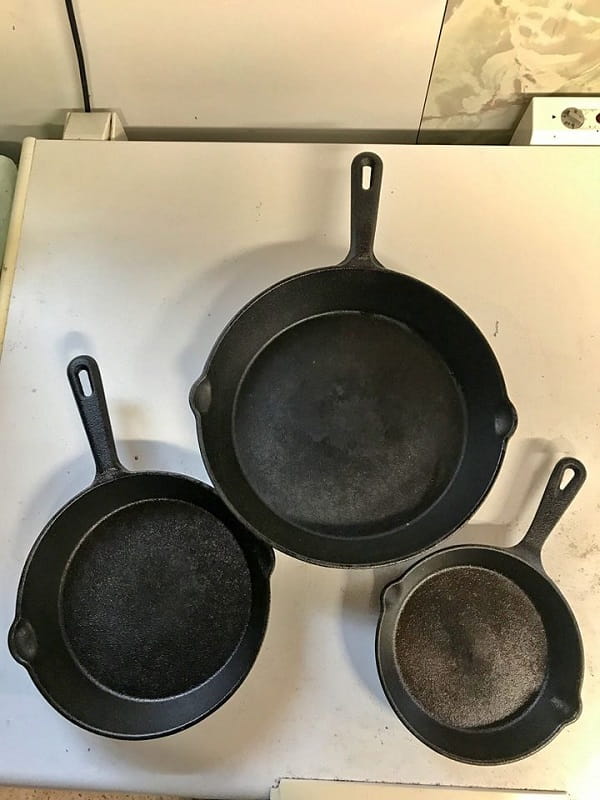
Are there any trade-offs to consider when using a hard nitrided skillet? The short answer is yes. There are a few things to keep in mind.
First and foremost, hard nitriding can be expensive. If you’re used to buying cheap cast iron skillets, the cost of a hard nitrided skillet may come as a shock. However, it’s important to remember that you’re paying for a product that will last a lifetime (or longer) with proper care.
Another potential downside is that some people prefer the seasoning that develops on traditional cast iron skillets. Hard-nitrided skillets don’t need to be seasoned in the same way, which means you may miss out on that unique flavor and patina.
Finally, there is debate over whether hard nitriding is safe for cooking. While the process is generally considered safe, there are concerns about the potential release of nitrogen during high-heat cooking. Some experts recommend avoiding hard-nitrided skillets for this reason, while others argue that the risk is minimal.
How Does Hard Nitriding Compare To Other Treatments For Cast Iron Skillets?
How does it compare to other treatments for cast iron skillets?
Let’s start with seasoning. Seasoning is a common way to treat cast iron skillets, which involves coating the surface with oil and baking it at high temperatures. While seasoning can help improve the skillet’s nonstick properties and protect it from rust, it doesn’t create the same hard, wear-resistant layer as hard nitriding.
Another popular treatment for cast iron skillets is electroplating. This involves coating the skillet’s surface with a thin layer of another metal, such as chrome or nickel. While electroplating can help improve the skillet’s appearance and protect it from rust, it doesn’t create the same hard, wear-resistant layer as hard nitriding.
Finally, let’s consider ceramic coatings. These involve applying a layer of ceramic material to the skillet’s surface, which can help improve its nonstick properties and resistance to corrosion. While ceramic coatings can be effective, they can also be prone to chipping and cracking over time, compromising their performance.
So, where does hard nitriding fit in? In my opinion, it’s one of the most effective treatments for cast iron skillets. It creates a hard, wear-resistant layer that can improve the skillet’s performance and lifespan and doesn’t affect its appearance or nonstick properties. Plus, it’s a relatively affordable treatment that many professional companies can do.
Of course, every cook and skillet is different, so it’s important to research and choose the right treatment. But as someone who has tried many different treatments for cast iron skillets, I can say that hard nitriding is worth considering if you want to improve your skillet’s performance and durability.
How Does The Price Of A Hard Nitriding Cast Iron Skillet Compare To Other High-Quality Cookware Options?
I’ve been curious about hard nitriding cast iron skillets and how they compare prices to other high-quality cookware options. And this is what I know:
Hard nitriding cast iron skillets typically fall in the mid-to-high price range for cookware. They’re a bit pricier than your typical non-stick skillet but are far more durable and long-lasting. Compared to other high-quality cookware options, hard nitriding cast iron skillets are generally priced similarly to stainless steel and slightly less expensive than copper cookware.
One of the big selling points of hard nitriding cast iron skillets is their ability to last for a lifetime with proper care. They’re incredibly durable and resistant to scratches, chips, and other damage. This means that while the initial investment may be higher, you’ll likely save money in the long run by not having to replace your skillet every few years.
It’s also worth noting that hard nitriding cast iron skillets are versatile and can be used on various cooking surfaces, including gas, electric, and induction stovetops, in the oven, and on the grill. This versatility makes them an excellent investment for any home cook looking for a high-quality skillet that can do it all.
In conclusion, while hard nitriding cast iron skillets may be a bit pricier than other cookware options, they’re worth the investment for their durability, non-stick capabilities, and long-term savings.
Will A Hard Nitriding Treatment Affect The Flavor Of Food Cooked In The Skillet?
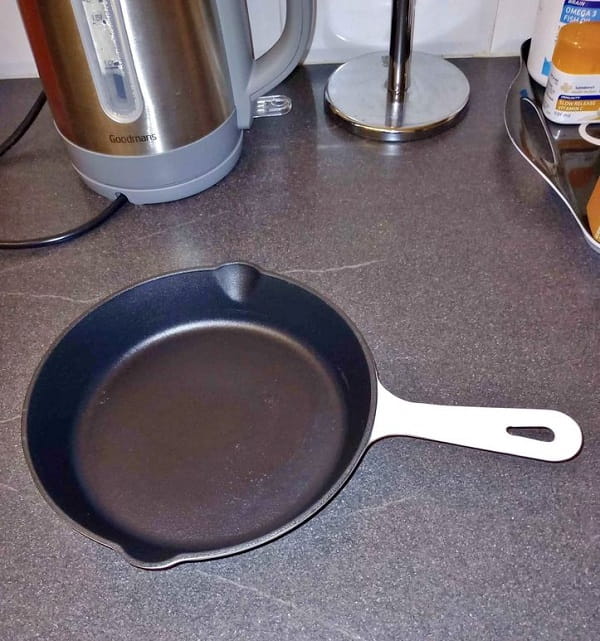
As someone who loves to cook and experiment in the kitchen, I was curious about the impact of hard nitriding treatment on the flavor of food cooked in a skillet. And the question is: does this treatment affect the flavor of food cooked in the skillet?
The answer is no. Hard nitriding treatment does not alter the chemical composition of the metal or affect the taste of the food cooked on its surface. The treatment only improves the physical properties of the metal, making it more resistant to scratches, corrosion, and heat.
Hard nitriding treatment can be beneficial for cooking. A skillet with this treatment will have a more durable surface that can withstand high temperatures and frequent use. This means you can cook with it longer without worrying about the metal breaking down or losing its non-stick properties.
It is worth noting, however, that the type of material used for the skillet can still affect the flavor of the food. For example, a cast-iron skillet will impart a different flavor to the food than a stainless-steel skillet. A well-seasoned skillet will enhance the flavor of the food cooked in it.
Can A Hard Nitriding Cast Iron Skillet Be Used In The Oven, And At What Temperature?
If you’re wondering whether you can use a hard nitriding cast iron skillet in the oven, the answer is yes – this cookware is 100% metal, so it can withstand any temperature you throw.
Unlike non-stick pans or those with plastic parts, there’s no risk of harmful chemicals or materials being released when exposed to high temperatures. This means that you can use your hard nitriding cast iron skillet for high-temperature cooking methods like searing or broiling, as well as for roasting or baking. Be sure to use oven mitts when handling the pan, as it will be very hot!
With the right seasoning and care, a hard nitriding cast iron skillet can be a versatile and durable addition to your kitchen cookware collection.
How To Season Hard-Nitriding Cast Iron?
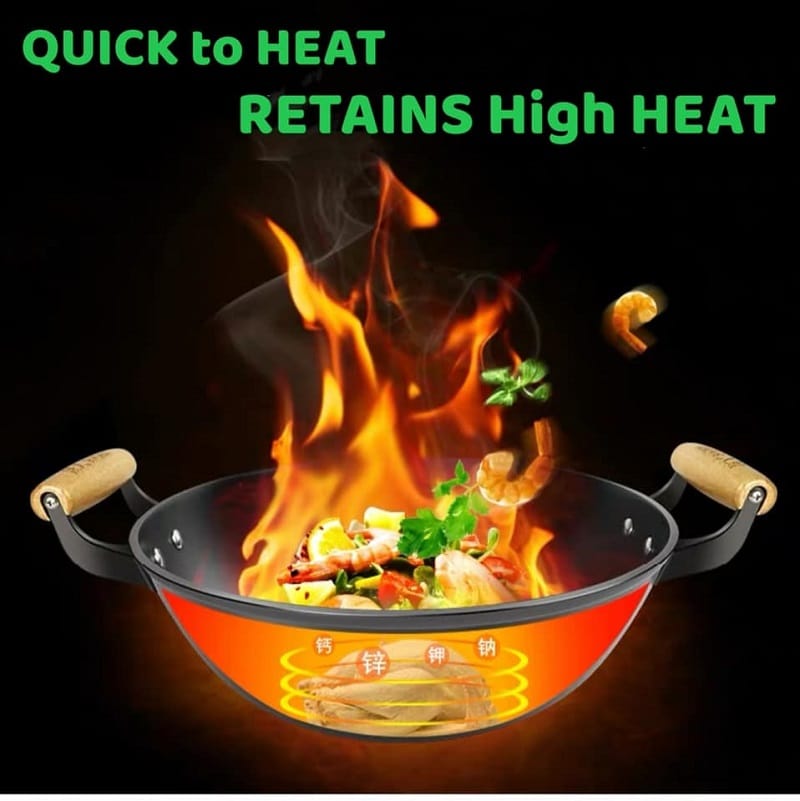
Seasoning hard-nitriding cast iron is a simple process that can greatly improve the quality of your cooking.
To season hard-nitriding cast iron, you’ll need a few things: vegetable oil, a paper towel or clean cloth, and an oven. Start by preheating your oven to 400 degrees Fahrenheit. While the oven is heating up, use a paper towel or cloth to spread a thin layer of vegetable oil over the entire surface of the cast iron. Be sure to cover every nook and cranny, including the handle.
Once the oven is heated, place the cast iron upside down on the center rack. This allows any excess oil to drip off and prevents pooling. Bake the cast iron for 1 hour, then turn off the oven and let it cool inside. Once the cast iron has cooled down, please remove it from the oven and wipe any excess oil with a clean cloth.
Repeat this process at least once more or until the surface of the cast iron is smooth and shiny. This process seasons the cast iron and creates a natural non-stick surface that will make cooking and cleaning easier.
Now that your hard-nitriding cast iron is seasoned and ready to go, it’s important to care for it properly. After each use, clean the cast iron with hot water and a stiff brush. Avoid using soap, as it can strip away the seasoning you’ve worked so hard to build up. Dry the cast iron thoroughly with a towel and apply a light coating of vegetable oil to prevent rusting.
Does Nitriding Add Thickness?
The answer is yes, but the extent of thickness added depends on several factors, such as the type of nitriding process used, the treatment time, and the furnace temperature. A higher nitriding temperature increases the nitride layer’s thickness but reduces its hardness. Therefore, the choice of temperature and treatment time is critical to achieving the desired thickness and hardness in the nitrided layer.
Other factors, such as the chemistry of the treated material and the type of nitriding process used, also play a crucial role in the outcome. However, it is essential to note that nitriding is a thermochemical process that enriches the surface layer of ferrous metals with nitrogen, resulting in improved surface hardness and durability.
How Does Hard Nitriding Affect The Maintenance And Care Of A Cast Iron Skillet?
For starters, a hard nitrided cast iron skillet will be more resistant to wear and corrosion compared to a regular cast iron skillet. This means that you won’t have to worry as much about rust or other types of damage that can occur over time.
A hard-nitrided cast iron skillet will also be easier to clean and maintain. The hard, wear-resistant layer created by the hard nitriding process will prevent food and other debris from sticking to the skillet’s surface, making it easier to clean and reducing the risk of food contamination.
However, it’s important to note that hard nitriding is not a magic solution to all of your cast iron skillet maintenance and care needs. You still need to take proper care of your skillet, such as seasoning it regularly, avoiding harsh detergents and abrasive cleaners, and storing it in a dry place.
In conclusion, hard nitriding can positively impact the maintenance and care of a cast iron skillet. It can make the skillet more resistant to wear and corrosion and easier to clean and maintain. However, it’s important to remember that hard nitriding is not a substitute for proper care and maintenance. With the right care, your cast iron skillet, whether hard-nitrided or not, can last a lifetime and provide you with delicious meals for years.
How Does A Nitrided Cast Iron Skillet Differ From A Traditional Seasoned Cast Iron Skillet?
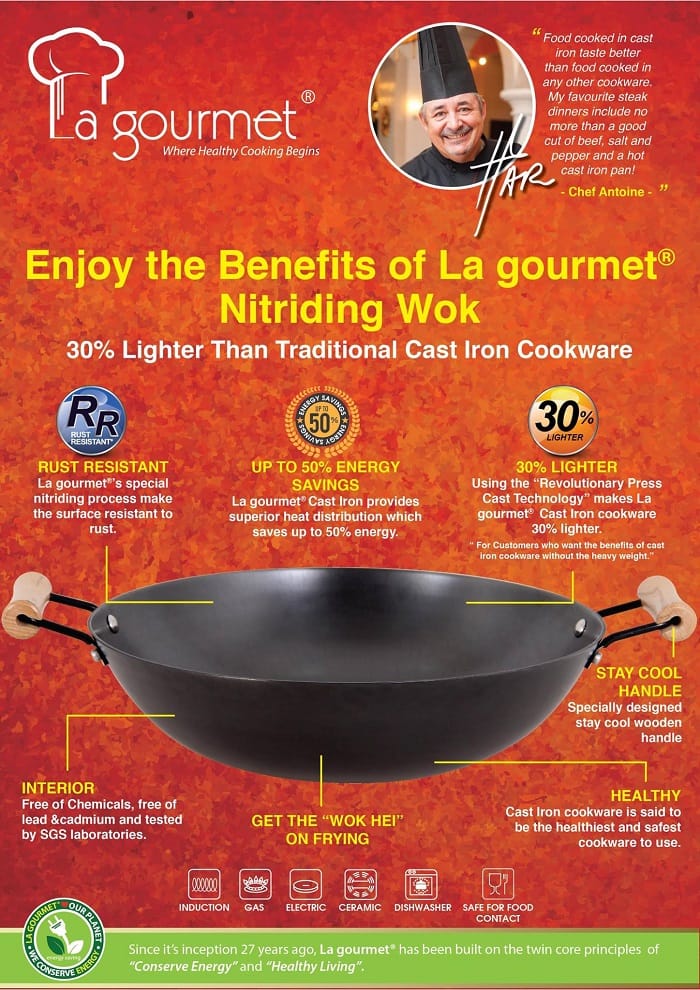
What are the main differences between a traditionally seasoned cast iron skillet and a nitrided cast iron skillet? Here are a few key points to consider:
- Non-stick properties: Both skillets are non-stick, but the non-stick properties of a nitrided skillet are more durable and long-lasting. This means that food is less likely to stick to the skillet’s surface, making it easier to cook and clean.
- Heat distribution: Nitrided cast iron skillets have better heat distribution than traditionally seasoned cast iron skillets. This means that food cooks more evenly, which is especially important for dishes that require precise cooking temperatures.
- Durability: Nitrided cast iron skillets are more durable than traditionally seasoned cast iron skillets. The iron nitride layer on the skillet’s surface is incredibly hard, making the skillet resistant to scratches, dings, and other types of wear and tear.
Overall, I’ve found that a nitrided cast iron skillet is a great investment for anyone who loves to cook. While they can be a bit more expensive than traditionally seasoned cast iron skillets, the added durability and non-stick properties make them worth the extra cost.
What Types Of Meals And Cooking Techniques Are Best Suited For A Hard Nitriding Cast Iron Skillet?
Regarding the types of meals and cooking techniques best suited for a hard-nitriding cast iron skillet, there are a few things to keep in mind. First and foremost, this type of skillet is perfect for searing and sautéing.
The hard nitriding process makes the skillet incredibly tough and resistant to scratches, so you can use metal utensils without worrying about damaging the surface. This makes it perfect for searing meats like steak, pork chops, and chicken, creating a beautiful crust on the outside while keeping the inside juicy and tender.
When it comes to sautéing, the hard nitriding cast iron skillet can withstand high temperatures without warping or cracking. This means you can cook delicate ingredients like mushrooms, onions, and garlic quickly and evenly without worrying about burning them.
In addition to searing and sautéing, the hard nitriding cast iron skillet is also great for cooking dishes that require a long, slow cook time. This skillet retains heat incredibly well, so you can cook stews, braises, and roasts perfectly.
A classic beef stew is one of my favorite dishes in a hard, nitriding cast iron skillet. I start by searing the beef in the skillet to create a beautiful crust, then I add onions, garlic, and carrots and let it all cook together for a few hours. The result is a rich and flavorful stew that will warm you up on a cold day.
When cleaning a hard, nitriding cast iron skillet, it’s important to note that you should never use soap or other harsh cleaning agents. Instead, rinse the skillet with hot water and scrub it with a stiff brush. This will help remove any food particles and keep the skillet’s surface smooth and free from scratches.
How Do You Clean Nitriding Cast Iron Skillet?
Cleaning a nitriding cast iron skillet might seem daunting, but it can be done easily with the right tools and techniques. As someone who loves cooking and takes pride in the cleanliness of my kitchen, I’ve had to clean my nitriding cast iron skillet several times. Here, I’ll share my step-by-step process for cleaning a nitriding cast iron skillet.
Step 1: Let the Skillet Cool
The first step in cleaning your nitriding cast iron skillet is to let it cool down completely. Please do not attempt to clean the skillet while it’s still hot, as this can cause severe burns. It’s best to wait at least 30 minutes after cooking before cleaning the skillet.
Step 2: Scrape Off Any Food Residue
Once the skillet has cooled down, use a spatula or scraper to remove any food residue or burnt-on bits. Be gentle while scraping, as you do not want to damage the skillet’s surface. You can try using a nylon scrubber if any stubborn bits won’t come off.
Step 3: Wash with Warm Water
After scraping off the food residue, it’s time to wash the skillet with warm water. Avoid using soap, as it can strip the seasoning of the skillet. Instead, gently scrub the skillet using a sponge or soft-bristled brush. Make sure to get into all the nooks and crannies.
Step 4: Dry the Skillet
Once you’ve finished washing the skillet, it’s time to dry it off completely. Use a clean, dry, or paper towel to remove excess moisture. If you leave the skillet wet, it can rust.
Step 5: Re-season the Skillet
After cleaning your nitriding cast iron skillet, it’s important to re-season it to maintain its non-stick properties. To do this, apply a thin layer of oil to the skillet and heat it over medium-high heat for a few minutes. This will help to create a new layer of seasoning on the skillet.
Common Misconceptions About Hard Nitriding Cast Iron Skillets
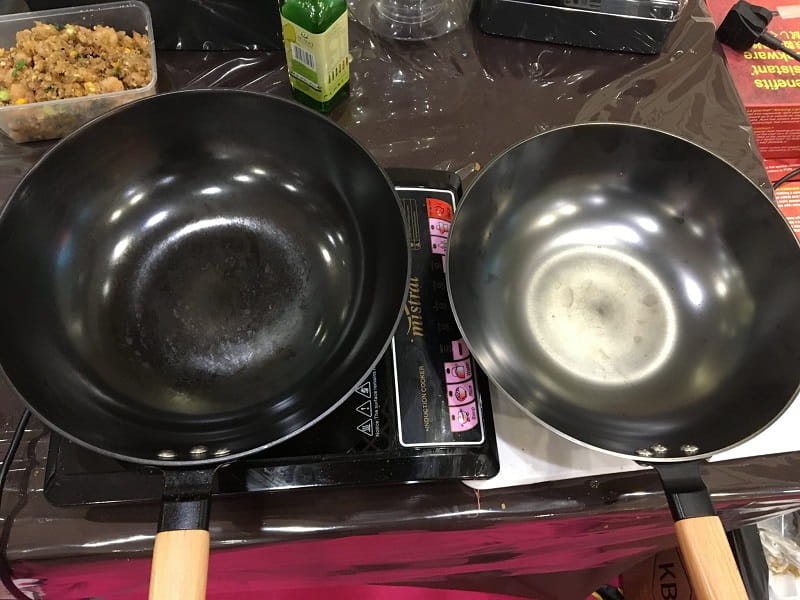
Quite a few myths floating around can confuse even the most experienced skillet user, so I thought I’d set the record straight.
Misconception #1: Hard Nitriding Cast Iron Skillets are Too Heavy
One of the biggest misconceptions about hard nitriding cast iron skillets is that they are too heavy to use regularly. While it’s true that these skillets are heavier than some other types of cookware, they are not so heavy that they are impractical. The weight of my hard, nitriding cast iron skillet helps to distribute heat and cook my food more evenly.
Misconception #2: Hard Nitriding Cast Iron Skillets are Too Expensive
Another misconception about hard nitriding cast iron skillets is that they are too expensive. While it’s true that these skillets can be pricier than some other types of cookware, they are also incredibly durable and can last for years if properly cared for. Plus, the superior heat retention and cooking that these skillets offer to make them a worthwhile investment for any serious home cook.
Misconception #3: Hard Nitriding Cast Iron Skillets are Too Difficult to Clean
Some people avoid hard nitriding cast iron skillets because they believe they are too difficult to clean. While it’s true that these skillets require a bit more care than some other types of cookware, they are not impossible to clean by any means. With a bit of hot water, some salt, and a bit of elbow grease, you can easily clean your hard, nitriding cast iron skillet and keep it in great condition for years to come.
Misconception #4: Hard Nitriding Cast Iron Skillets are Too Delicate
Finally, some people avoid hard nitriding cast iron skillets because they believe they are too delicate. While it’s true that these skillets require proper care to maintain their quality, they are not as delicate as some people believe. These skillets are incredibly durable and can withstand high heat and heavy use without issue.
Where Can I Buy Nitriding Cast Iron Skillet?
Nitriding Cast Iron Skillet is becoming more and more popular, so that you can find them at a variety of retailers. Here are some options:
- Amazon is always a great place to start your search. Just type in “nitriding cast iron skillet,” and you’ll find various options from different brands.
- Lodge – Lodge is a well-known brand in the cast iron world, and they offer a nitriding option. You can find it on their website or at retailers like Target and Walmart.
- Stargazer – Stargazer is a newer brand specializing in nitriding cast iron skillets. Their skillets have a unique design that makes them easy to handle and pour from. You can purchase them on their website or Amazon.
- Field Company – Field Company is another popular brand that offers a nitriding option. Their skillets have a smooth cooking surface perfect for searing and frying. You can find them on their website or at retailers like Williams Sonoma.
- Finex – Finex is a high-end brand that offers a nitriding option. Their skillets have a unique octagonal shape and a polished cooking surface. You can find them on their website or at retailers like Sur La Table.
When purchasing a nitriding cast iron skillet, it’s important to research and finds the brand and size that works best for you.
FAQs About Hard Nitriding Cast Iron
How Does The Nitriding Treatment Affect The Non-Stick Properties Of A Cast Iron Skillet?
This treatment infuses nitrogen into the cast iron, making it more durable and corrosion-resistant. However, it does not affect the skillet’s non-stick properties more than any other cast iron skillet. The effectiveness of a cast iron skillet in preventing food from sticking lies in its seasoning, which forms a barrier between the food and the skillet’s surface. As such, a newer skillet is more prone to sticking until it has been appropriately seasoned. So, in conclusion, a nitriding-treated cast iron skillet is highly rust-resistant and durable, but its non-stick properties depend mainly on its seasoning.
Can A Nitrided Cast Iron Skillet Be Used On All Types Of Cooktops, Including Induction?
It’s a common misconception that cast iron cookware cannot be used on induction cooktops. However, this is far from the truth. A nitrided cast iron skillet, including induction, can be used on all cooktops. The hard nitriding process coats the skillet with a permanent material that functions well on any cooking surface.
It should be noted that not all types of cast iron can be treated with nitrogen, so always make sure to check the manufacturer’s instructions before using any cast iron cookware on an induction cooktop.
Can Hard Nitriding Extend The Lifespan Of A Cast Iron Skillet?
Hard nitriding can certainly extend the lifespan of a cast iron skillet. Nitriding cast iron involves infusing it with nitrogen and heating it to 1,000°F, which creates a deep layer of protection that can last a lifetime with proper care. Seasoned cast iron is already quite durable, but nitriding adds extra strength, making maintenance even easier.
However, it’s worth noting that not all cast iron skillets can be nitrided – only select ones are suitable for the process. While nitriding can provide a thin, hard, wear-resistant layer, the skillet’s load can limit the coating’s extended use.
What Is The Cost Of Hard Nitriding Compared To Buying A New Cast Iron Skillet?
The cost of hard nitriding compared to buying a new cast iron skillet varies depending on the product and where it is purchased. Some online stores offer hard-nitrided cast iron skillets for a reasonable price compared to traditional varieties. Others may charge a higher price due to the additional heat treatment process. It’s important to do your research and compare prices before making a purchase.
However, investing in a hard nitrided cast iron skillet can be a smart decision in the long run, as the surface is significantly more scratch-resistant and durable than traditional cast iron. Plus, it offers all the benefits of cast iron without any downsides, such as rusting or flaking.
Conclusion
Overall, I highly recommend using hard nitriding cast iron in cooking. It is safe and durable and provides superior heat retention and a nonstick surface without chemicals. If you are looking to up your cooking game and invest in high-quality cookware, hard-nitriding cast iron is worth considering.
References:
- https://www.washingtonpost.com/food/2022/01/24/cast-iron-glass-ceramic-cooktop/
- https://www.ncbi.nlm.nih.gov/pmc/articles/PMC7288312/
- https://examine.com/articles/are-cast-iron-pans-unsafe/

Hey readers! Chip Holland here, and I’m a Manager of this website. My passion for writing about it only matches my passion for BBQ. Follow my blog for mouth-watering recipes, tips, and tricks for the perfect smoke, grill, and BBQ. I’m sure you won’t be disappointed!
